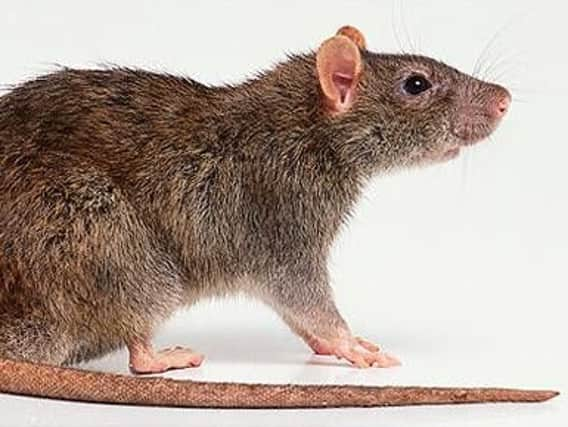What to do if you see a rat


The British Pest Control Association (BPCA) says the rodents carry many nasty diseases which they can spread to humans, normally through their urine, including; Leptospirosis or Weil's disease, Salmonella, Listeria, Toxoplasma gondii and Hantavirus.
They can also inflict an enormous amount of structural damage on properties, and can even cause severe fires by gnawing away the insulation around electrical cables, floods by puncturing pipes and even death by chewing through gas pipes.
Advertisement
Hide AdAdvertisement
Hide AdProperty owners have a legal obligation under the Prevention of Damage by Pests Act 1949 to keep premises rodent free, or, if rodents pose a threat to health or property, to report infestations to the local authority.
Spotting one rat could mean it is simply passing through looking for food. But if you see signs on an infestation, you must take action.
Signs of a rat infestation
The presence of rat droppings, which are wide and dark brown in colour resembling a large grain of rice, is one of the giveaway signs of an infestation.
Advertisement
Hide AdAdvertisement
Hide AdGnaw marks, hear scratching sounds or find evidence of rat runs - trails where the rats have been travelling.
Rats inhabit anywhere that provides food, water and shelter. In houses, for example, they will live in roof spaces, wall cavities and under floorboards - and in gardens they can be found under sheds, in sewer systems, and even burrowed into grassy banks.
den birds, do not do this to excess and use a bird table or feeder basket if possible.
How to get rid of rats
Advertisement
Hide AdAdvertisement
Hide AdThe BPCA states rats are adaptable, highly mobile and breed rapidly - a combination that can make rat control a difficult task for the untrained individual.
Sunderland City Council provides a pest control service, and private companies, such as those represented by the BPCA, are also are trained in rat control and with access to a range of professional use rodenticides which are not available to the public.
Amateur use poisons and traps are available from hardware stores and garden centres if you choose to do the job yourself.
The BPCA said most rats are wary of new objects such as traps or poisons placed in their environment and will avoid them for a period before exploring them, so don't expect instant success.
Advertisement
Hide AdAdvertisement
Hide AdWhen placing poison or traps, make sure they are in a safe and secure place out of reach of children and pets.
How do I know if it's definitely a rat infestation I have
There are two species of rat in Britain, rattus norvegicus - the brown rat or common rat; and rattus rattus - the black rat or ship rat, which is now very rare in the UK.
The brown rat is the larger of the two, as well as being the most common. It often weighs more than half a kilo and measures about 23cm (that's not counting its tail).
It has a blunt muzzle, small hair-covered ears and a tail that is shorter than its body.
Advertisement
Hide AdAdvertisement
Hide AdThe black rat is much smaller, weighing half as much as a brown rat, and is shorter. It has a pointed muzzle, large, almost hairless ears, a more slender body and a long thin tail that is longer than its body.